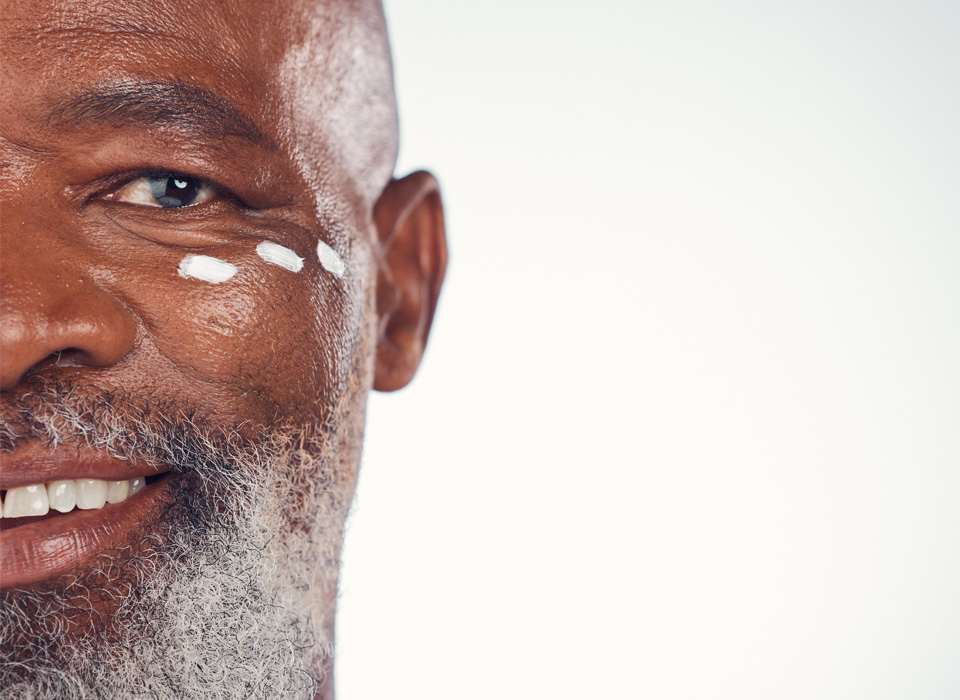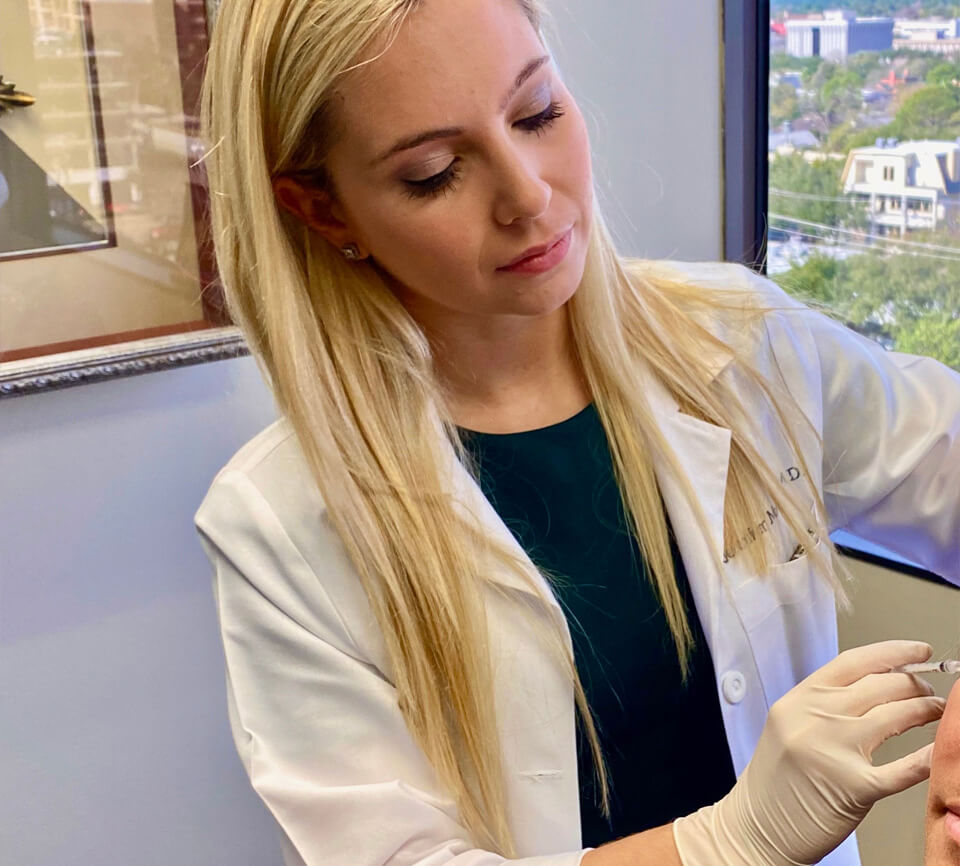Tearing (Nasolacrimal Surgery)



Excessive tearing can occur when the lacrimal gland becomes overstimulated. Dry eyes, autoimmune disease, treatment with chemotherapy, trauma, previous eye surgery, infection, and many other outside nuisances can cause nonstop tearing, flooding the nasolacrimal system and creating tears that roll down your cheek.
How do we stop this? Remove the irritant!
Correcting the eyelids, such as malposition like ectropion and entropion, removing eyelashes poking the eyes (trichiasis), discontinuing harmful medications, and treating dry eye and allergies in the eyes can all improve or resolve tearing. Many people have conditions that cause inflammation and irritation around the eyelids, such as blepharitis, meibomian gland dysfunction, and ocular rosacea. Fixing the root of the underlying condition can improve tearing, without any further need for nasolacrimal surgery.
By improving the health of our eyelids and decreasing irritation to the eye, we can do many things at home to help with tearing issues:
Lid hygiene – Scrub your eyelids and lashes daily with baby shampoo. Make this part of your daily routine in the shower.
Warm compresses – Apply a warm wet washcloth to the eyelids, and give yourself a gentle massage over the eyelids. Not only will this feel fantastic, but it will help your oil glands (meibomian glands) secrete a healthier free-flowing oil.
Ocular lubrication – While it may seem counterintuitive to add tears to a tearing eye, dry eyes can often cause the body to oversecrete tears. By using artificial tears to lubricate the eyes a few times throughout the day, this can decrease excessive tearing.
Oral supplements – Dr. Murdock recommends specific supplements that can improve the health of the oil glands and ocular surface, such as fish oil, flax seed oil, and evening primrose oil. Take caution that fish oil and flax seed oil can be mild blood thinners, so it is recommended to consult with your primary doctor for any contraindications.
Other Oral Medications – Certain medications can impact the inflammation in the eyelids, such as tetracyclines and macrolides. While these medications are considered antibiotics, Dr. Murdock may recommend doxycycline or azithromycin for their anti-inflammatory properties. This can help in ocular rosacea and decrease the inflammation of the eyelid vessels.
Intense pulse light (IPL) – IPL is a light device that can improve the function of meibomian glands and decrease inflammation in the eyelid vessels. Very few practitioners, Dr. Murdock being one of them, offer this specialized treatment for eyelid inflammation and blepharitis.

Other Oral Medications – Certain medications can impact the inflammation in the eyelids, such as tetracyclines and macrolides. While these medications are considered antibiotics, Dr. Murdock may recommend doxycycline or azithromycin for their anti-inflammatory properties. This can help in ocular rosacea and decrease the inflammation of the eyelid vessels.
Intense pulse light (IPL) – IPL is a light device that can improve the function of meibomian glands and decrease inflammation in the eyelid vessels. Very few practitioners, Dr. Murdock being one of them, offer this specialized treatment for eyelid inflammation and blepharitis.
Before the tears enter the drainage system, or nasolacrimal system, other problems with the eye can block the tears from entering this system. Eyelid abnormalities can cause the tears to flow down the cheek rather than towards the nose, like eyelid laxity, turning in of the eyelid (entropion), or turning out of the eyelid (ectropion). Similarly, excess tissue of the conjunctiva that occurs with increasing age, allergies, and eye rubbing called conjunctivochalasis can sit on the lower eyelid and push the tears over the edge, down to the cheek. Dr. Murdock may see any of these issues during a tearing evaluation and discuss the management options for each.
The next step in figuring out your tearing issues is a diagnostic procedure in the office, where Dr. Murdock will perform a quick diagnostic test to see if you have an obstruction in the tear outflow system. A nasolacrimal obstruction may be the underlying problem. Chronic sinus disease, allergies, nose surgery like rhinoplasty, or nasal trauma can all cause blockage in the nasolacrimal system, resulting in tearing.
If Dr. Murdock finds a blockage in your nasolacrimal system, she may recommend a procedure to fix or bypass the blockage. Let’s look into many of the different points along the nasolacrimal system and the surgical procedure that can fix them.
Punctal stenosis – If the punctum is small or obstructed, a small in-office procedure can fix the tearing. Just a few snips to open the punctum is all it takes!
Canalicular stenosis – This one is a rare condition, and Dr. Murdock can discuss 2 different options. First, she may explain a procedure that involves a small instrument similar to a tiny Roto-Rooter® that can bore through the blockage. This is followed by nasolacrimal stents that are removed later in the office. Alternatively, a CDCR involving a glass tube (Jones tube) may be the solution to this tearing problem.
Nasolacrimal duct obstruction – This problem is a blockage inside of the nose. The nasolacrimal duct exists at the end of the nasolacrimal system, deep inside the nose. To correct NLDO, rather than going through the blockage, the tears need to be redirected through a different part of the nose. This procedure is called a dacryocystorhinostomy (DCR). Dr. Murdock performs this procedure via an endoscopic approach, meaning she uses a small camera to perform the surgery completely inside the nose. No scars, no incisions on the skin. This scarless surgery is very effective to resolve tearing once and for all.
While tearing may seem quite complex, Jennifer Murdock, MD is the board-certified surgeon who specializes in these complicated issues. Her extensive experience as a tearing specialist performing hundreds of successful tearing surgeries will make you only have tears of joy!
12750 NW 17th St, #226
Miami, FL 33182
601 N Federal Hwy, Suite 411
Hallandale Beach, FL 33009
Call: 305-315-5577
